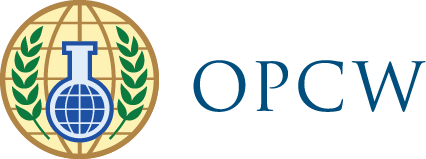The Most Traded Scheduled Chemicals brochure identifies 49 most traded Schedule 2 and Schedule 3 chemicals of the Chemical Weapons Convention based on the declarations submitted by the States Parties under Article VI of the Convention from 1997 to 2014.
The 2022 edition supersedes previous versions and includes the updated Harmonized System (HS) Codes that came into effect from 1 January 2022. A correlation table between the previous version of the HS 2017 and the current version of the HS 2022 is included in this brochure.
Chemical Identifiers
This OPCW tool aims to assist States Parties in the identification of scheduled chemicals. It contains several identifiers for each chemical e.g. chemical name, schedule, Chemical Abstracts Service Registry Numbers (CAS RN), CAS Index Name, HS codes, chemical structure, International Union of Pure and Applied Chemistry (IUPAC) Name and synonyms – if available.
The brochure also provides some examples of commercial applications and industrial uses of the scheduled chemicals.
Chemical Index
The chemicals in the brochure are indexed twice; the first index is arranged in ascending order of schedule number (Schedule 2 and Schedule 3), entry number in a schedule (e.g. 2B04, 2B05, 2B06, etc.) and CAS RN in each entry. The second index is arranged in ascending order of CAS RN only.
Definitions
Schedule
Identifies toxic chemicals and their precursors with one digit; the letter A or B, and two digits as indicated in the Annex on Chemicals to the Convention (e.g. 2B04, 3A01):
- The first digit identifies the Schedule: Schedule 2 or Schedule 3
- The letter A means a toxic chemical and B means a precursor
- The last two digits identify the entry number of the chemical in the Schedule
(e.g. 3B17 identifies a chemical which is a precursor listed in the Schedule 3 with the entry number 17 (Chemical Name “Triethanolamine”).
Chemical Name
The name of a substance which is created based on the names given in the Annex on Chemicals to the Convention (e.g. Triethanolamine, Dimethyl methylphosphonate). Where a chemical name is not available the other name (e.g. CAS Index name or IUPAC name) is used as a chemical name.
CAS Index Name
Chemical name assigned to a substance by the nomenclature of the CAS (e.g. CAS Index name of Triethanolamine is Ethanol, 2,2′,2”-nitrilotris-)
IUPAC Name
Systematic chemical name based on the nomenclature developed by the International Union of Pure and Applied Chemistry (IUPAC) (e.g. IUPAC name of Triethanolamine is 2,2′,2”-Nitrilotriethanol)
CAS RN
Chemical Abstracts Service Registry Number is a unique numeric identifier assigned by the Chemical Abstracts Service (CAS) of the American Chemical Society. A CAS RN is separated by hyphens into three parts (e.g. CAS RN of Triethanolamine is 102-71-6).
HS Code
Harmonised System Code is the International Harmonized System Nomenclature comprising the headings and subheadings and their numerical codes maintained by the World Customs Organization (WCO) (e.g. HS code of Triethanolamine is 2922.15).
Molecular Formula
A set of chemical symbols showing the number of atoms of each element within a molecule of a substance (e.g. C6H15NO3).
Chemical Structure
Illustrates arrangement of atoms in the molecule of a substance (e.g. chemical structure of Hydrogen Cyanide: H – C ≡ N).
Commercial applications/Industrial uses
Compiles some examples of commercial applications and industrial uses obtained from the open sources.
